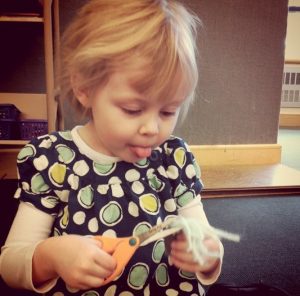2.12: 1950s: Piaget
- Page ID
- 77350
\( \newcommand{\vecs}[1]{\overset { \scriptstyle \rightharpoonup} {\mathbf{#1}} } \) \( \newcommand{\vecd}[1]{\overset{-\!-\!\rightharpoonup}{\vphantom{a}\smash {#1}}} \)\(\newcommand{\id}{\mathrm{id}}\) \( \newcommand{\Span}{\mathrm{span}}\) \( \newcommand{\kernel}{\mathrm{null}\,}\) \( \newcommand{\range}{\mathrm{range}\,}\) \( \newcommand{\RealPart}{\mathrm{Re}}\) \( \newcommand{\ImaginaryPart}{\mathrm{Im}}\) \( \newcommand{\Argument}{\mathrm{Arg}}\) \( \newcommand{\norm}[1]{\| #1 \|}\) \( \newcommand{\inner}[2]{\langle #1, #2 \rangle}\) \( \newcommand{\Span}{\mathrm{span}}\) \(\newcommand{\id}{\mathrm{id}}\) \( \newcommand{\Span}{\mathrm{span}}\) \( \newcommand{\kernel}{\mathrm{null}\,}\) \( \newcommand{\range}{\mathrm{range}\,}\) \( \newcommand{\RealPart}{\mathrm{Re}}\) \( \newcommand{\ImaginaryPart}{\mathrm{Im}}\) \( \newcommand{\Argument}{\mathrm{Arg}}\) \( \newcommand{\norm}[1]{\| #1 \|}\) \( \newcommand{\inner}[2]{\langle #1, #2 \rangle}\) \( \newcommand{\Span}{\mathrm{span}}\)\(\newcommand{\AA}{\unicode[.8,0]{x212B}}\)
Piaget: Cognitive Development Theory
Sensorimotor Stage
Preoperational Stage

Figure 1. A child pretending to buy items at a toy grocery store. (Photo Credit: Ermalfaro, CC BY SA 4.0.)
Egocentrism
Formal Operational Stage
| Name of Stage | Description of Stage |
|---|---|
| Sensorimotor Stage | During the sensorimotor stage, children rely on the use of the senses and motor skills. From birth until about 2 years, the infant learns by tasting, smelling, touching, hearing, and moving objects around. This is a hands-on type of knowledge. |
| Preoperational Stage | In the preoperational stage, children from ages 2 to 7 years become able to think about the world using symbols. A symbol is something that stands for something else. The use of language, whether it is in the form of words or gestures, facilitates knowing and communicating about the world. This is the hallmark of preoperational learning and it typically occurs in early childhood. However, these children are preoperational or pre-logical. They still do not understand how the physical world operates. They may, for instance, fear that they will go down the drain if they sit at the front of the bathtub, even though they are too big. |
| Concrete Operational Stage | Children in the concrete operational stage, ages 7 to 11 years, develop the ability to think logically about the physical world. Middle childhood is a time of understanding concepts such as size, distance, and constancy of matter, and cause and effect relationships. A child knows that a scrambled egg is still an egg and that 8 ounces of water are still 8 ounces no matter what shape of glass contains it. |
| Formal Operational Stage | During the formal operational stage children, at about 12 years of age, acquire the ability to think logically about concrete and abstract events. The teenager who has reached this stage is able to consider possibilities and to contemplate ideas about situations that have never been directly encountered. More abstract understanding of religious ideas, morals, or ethics, and abstract principles such as freedom and dignity can be considered. |
Criticisms of Piaget’s Theory
- This chapter is an adaptation of Child Growth and Development by Paris, Ricardo, & Rymond, and Child Development by Lumen Learning, used under a CC BY 4.0 license. ↵
- Crain, W. (2005). Theories of development concepts and applications (5th ed.). Pearson Education, Inc. ↵
- Lally, M., & Vlentine-French, S. (2017). Lifespan development:
A psychological perspective. College of Lake County Foundation. http://dept.clcillinois.edu/psy/LifespanDevelopment.pdf.↵ - Lumen Learning. (n.d.). Lecture transcript: Developmental theories. https://courses.lumenlearning.com/lifespandevelopment2/chapter/lesson-2-lecture-transcript/. ↵



